
A jigsaw makes straight and bevelled cuts, curves and intricate shapes.
The position of the blade and the plane of its motion make it a relatively safe tool to use, even when operated with one hand.
There are blades for use on timber, stainless steel, fibre cement and even ceramic, with some able to cut material up to 100mm thick.
Features of a jigsaw
Variable speed
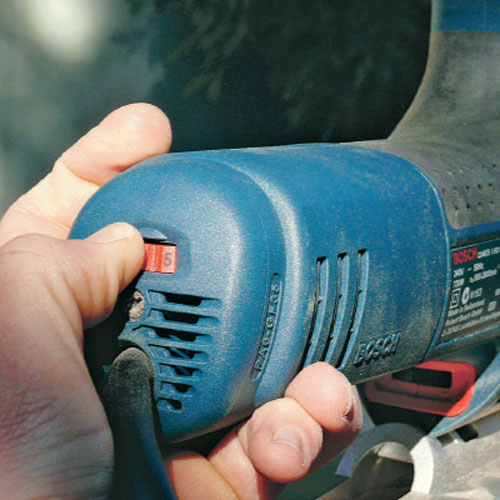
Adjust the speed control to suit the material and feed rate of the cut
Pendulum Action
This makes the blade swing forwards and back as it moves up and down. Use a low setting for thin material and the neatest cut, increasing for thick, soft timber or when cutting along the grain.
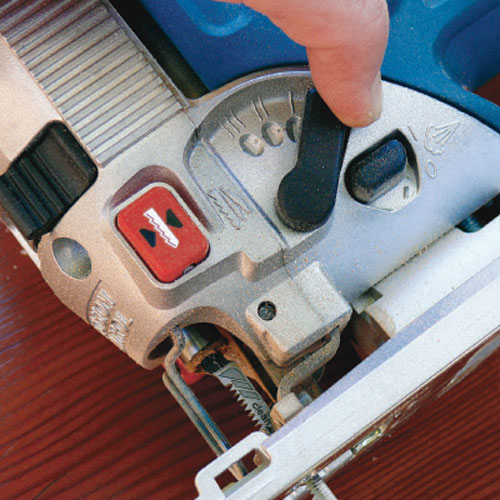
Use a low setting for thin material and the neatest cut, increasing for thick, soft timber or when cutting along the grain
Trigger lock
To reduce hand fatigue, most jigsaws have a trigger lock that keeps the tool switched on without maintaining pressure on the trigger. It’s an especially useful feature when operating a jigsaw one-handed.
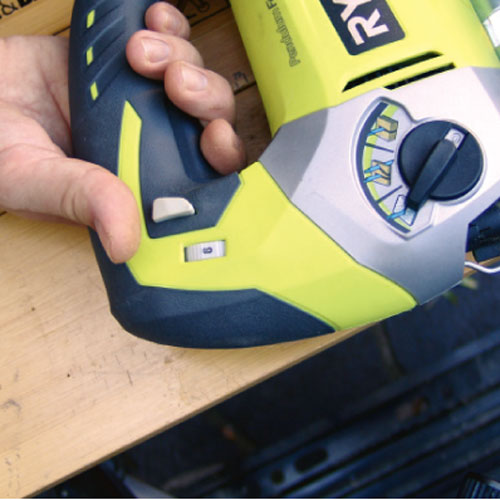
Most jigsaws have a trigger lock that keeps the tool switched on without maintaining pressure on the trigger
How to choose a jigsaw blade
CONSIDER THE MATERIAL and the shapes you are cutting when choosing a blade, using a fine-toothed one for smooth cuts in thin timber and a long, open-toothed blade for thick material.
Use a laminate blade for clean cuts through laminated material and a scroll blade for tight curves.
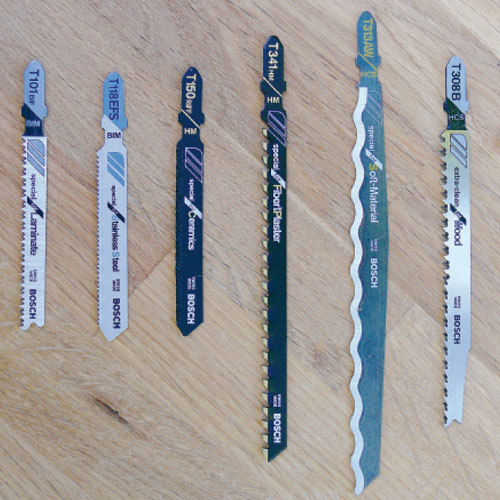
Use a fine-toothed blade for smooth cuts in thin timber and a long, open-toothed blade for thick material
MATCH THE SHANK to the blade mount on your jigsaw. Most newer models take the T or bayonet shank, but if you are unsure of which yours is, simply take the old blade with you when buying a new one.
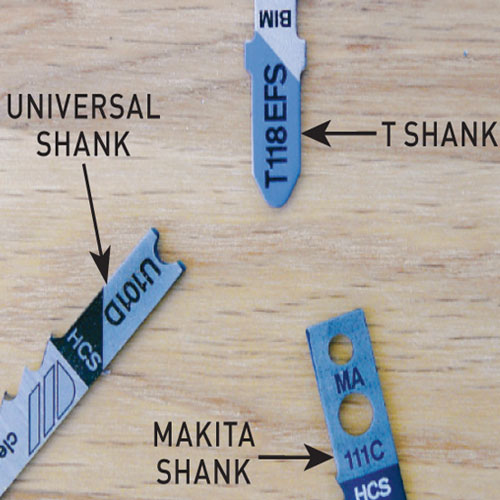
Most jigsaw models take the T or bayonet shank
Changing blades
To change the blade, disconnect the power and wait for the blade to cool if you have just been using the jigsaw.
Depending on the design of your tool, use an Allen key, operate the lever or turn the quick-change mount to release the blade.
Remove the old blade then fit the new one and tighten the mount.
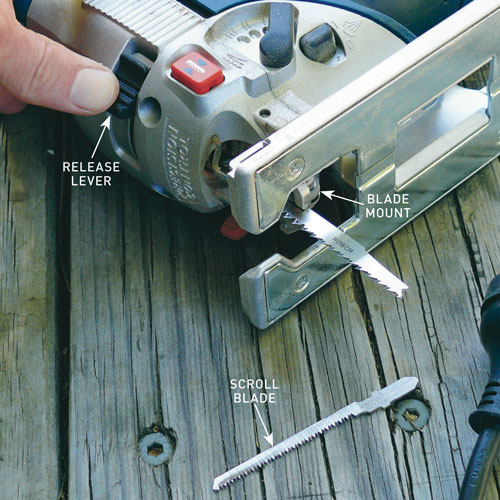
To change the blade, disconnect the power and wait for the blade to cool if you have just been using the jigsaw
Tips for clean cuts
Jigsaws cut on the up stroke. Follow these guidelines to prevent timber fibres being torn up around the edge of the cut.
POSITION the workpiece face down and cut from the back.
CLAMP a sacrificial layer of thin board over the material.
ATTACH the small, clear plastic plate that fits around the blade.
USE a clean-cut blade with teeth shaped to minimise breakout.
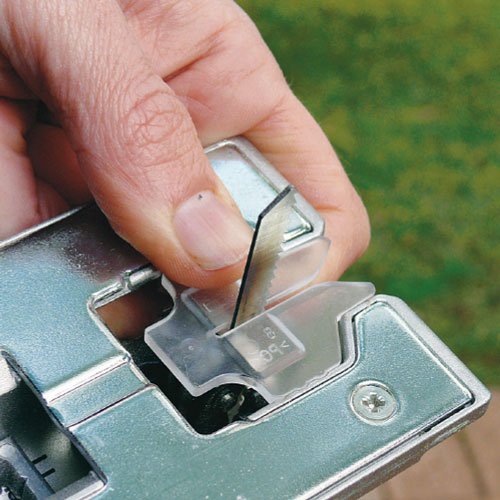
Follow these guidelines to prevent timber fibres being torn up around the edge of the cut
Making general cuts with a jigsaw
Step 1. Clamp the workpiece
Position the clamps so they won’t interfere with the course of the saw and allow clearance for the blade underneath the material being cut
Step 2. Start the cut
With the front of the shoe firmly on the workpiece, align the blade with the waste side of the cut line, select the speed and start the saw.TIP Don’t force the jigsaw, just steer it and let the blade do the work.
Step 3. Make extra cuts
Don’t try to turn a 90º corner, cut into it from different directions. When making long cuts, periodically saw through the waste area to the cut line for better access.
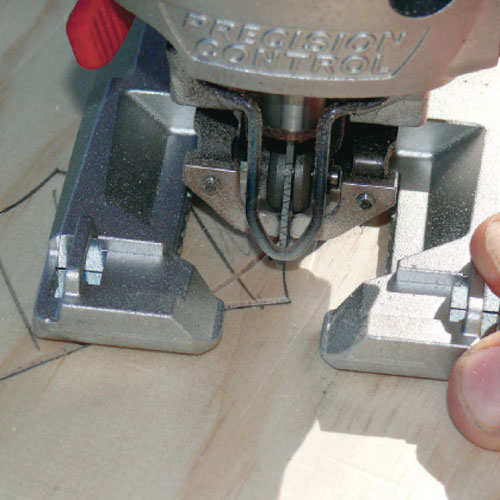
When making long cuts, periodically saw through the waste area to the cut line for better access
Making special cuts with a jigsaw
Like circular saws, jigsaws can be used for bevel and plunge cuts, and can deal with unusually thick as well as thin material. Although the depth of cut can’t be adjusted, jigsaws are much more manoeuvrable than circular saws.
Bevel cuts
Disconnect the power and tilt the shoe to the required angle, up to 45º. Most jigsaws need a screw to be loosened to free the swinging shoe, although some models have a quick-release lever instead.
Clamp a straightedge to the work surface to keep the saw straight. Don’t push too hard but keep downward pressure on the shoe.
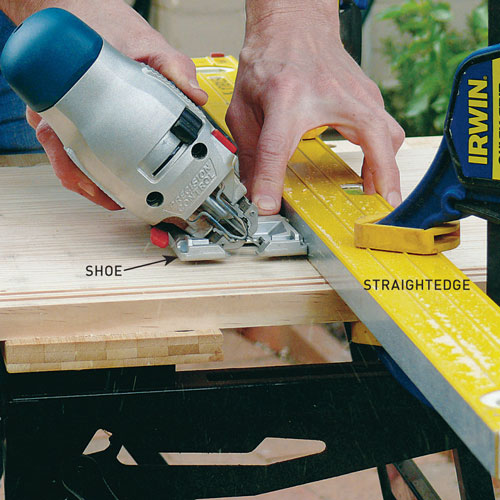
To make bevel cuts first disconnect the power and tilt the shoe to the required angle
Negotiate thick material
Jigsaws work best on hardwood up to 20mm thick and softwood up to 35mm. The blade tends to bend in thicker material, resulting in a bevelled edge instead of a square cut.
For thick material, use a fresh, sharp blade. Set the pendulum action to maximum and make the cut in short runs, backing up frequently to ease the pressure on the blade.
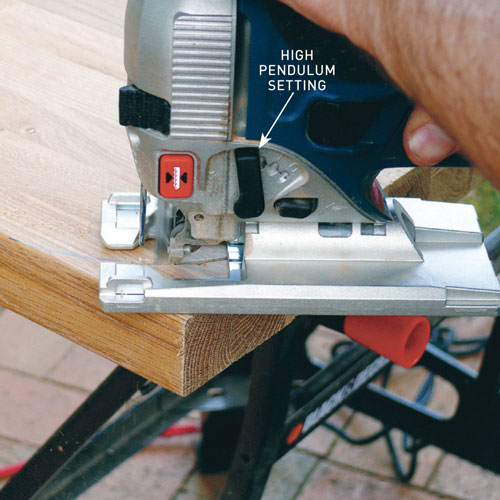
Jigsaws work best on hardwood up to 20mm thick and softwood up to 35mm
Protect thin sheets
Sandwich thin sheet material such as metal, laminate or plastic between sheets of plywood or MDF about 6mm thick, then cut through all the layers.
Position the layered sheets on a cutting surface with a dedicated channel or keyhole for the blade to pass through while the material is resting on either side.
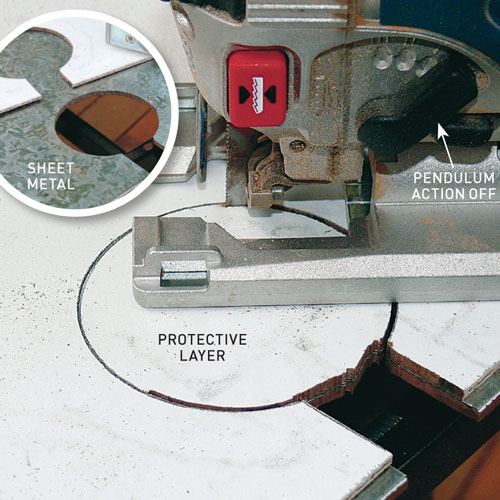
Sandwich thin sheet material such as metal, laminate or plastic between sheets of plywood or MDF
Make plunge cuts
It’s best to drill a starter hole but if you can’t, fit a blade suitable for plunge cutting and lean the jigsaw forward, pivoting the front edge of the shoe until the blade is clear of the work surface even at full extension.
Hold the jigsaw firmly, bring it up to full speed then pivot down slowly until the blade penetrates the material.
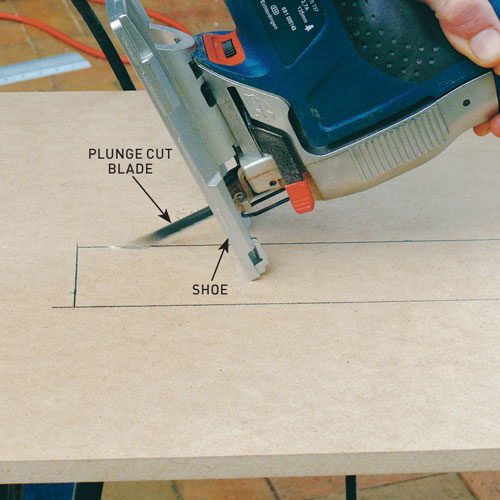
Hold the jigsaw firmly, bring it up to full speed then pivot down slowly until the blade penetrates the material

